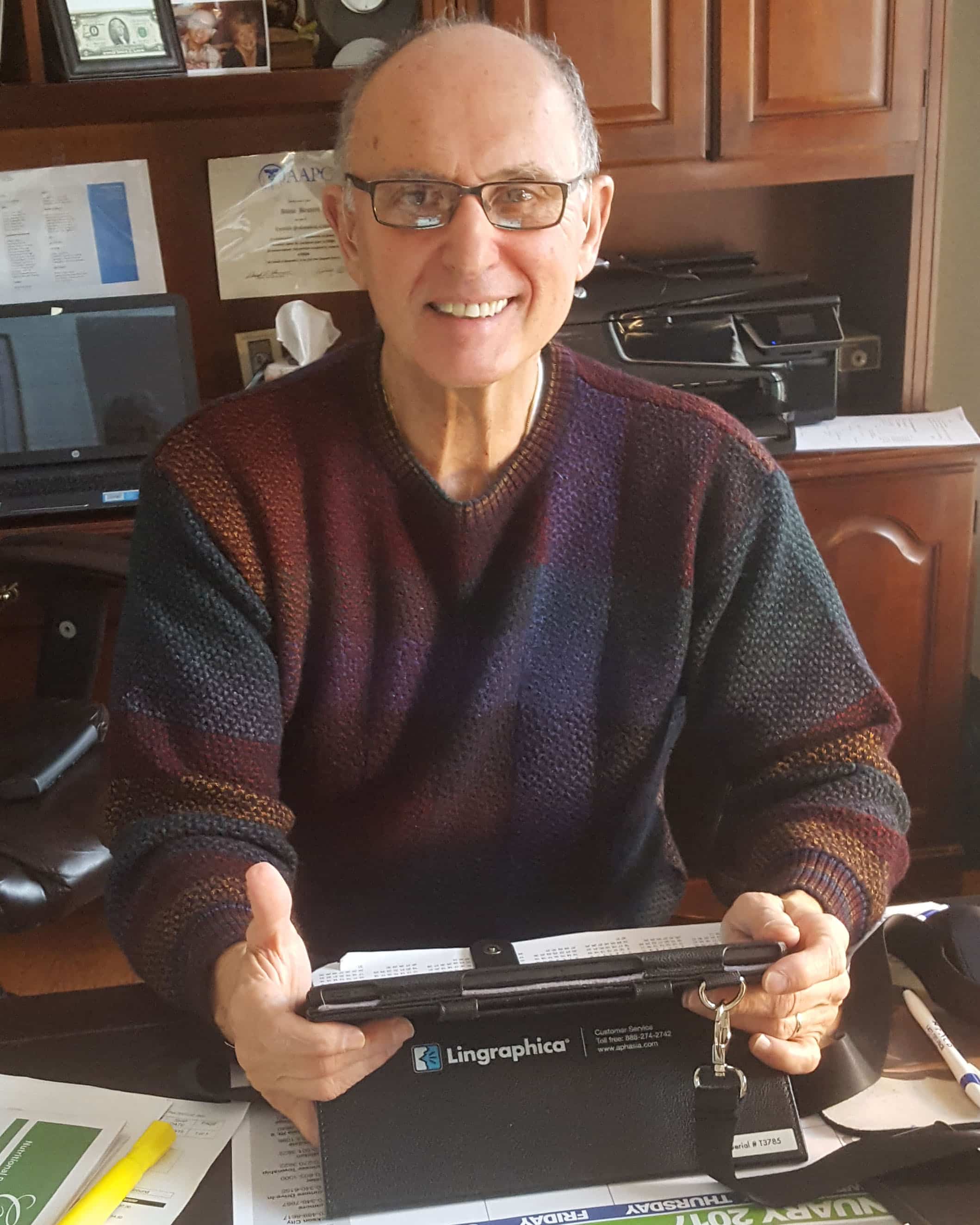Primary Progressive Aphasia Victim Finds Hope with A Lingraphica Communication Device
 John “Jack” Brunetti’s story began in Scranton, PA. He earned a degree in History from the University of Scranton, and after college worked first as a Produce Manager for Acme Markets and later as District Sales Manager for Nestle Food for 35 years. He and wife Diana have been married for 50 years and have two sons, Steven and Mark, and three grandchildren.
John “Jack” Brunetti’s story began in Scranton, PA. He earned a degree in History from the University of Scranton, and after college worked first as a Produce Manager for Acme Markets and later as District Sales Manager for Nestle Food for 35 years. He and wife Diana have been married for 50 years and have two sons, Steven and Mark, and three grandchildren.
For years, Jack’s life was enriched by his love of Penn State football as well as charitable work with UNICO, the largest Italian-American service organization in the world. He spoke fluent English and Italian for decades, until he began having language difficulties.
One day he began mixing up his pronouns and dropping verbs from sentences. Italian was also disappearing from his vocabulary. He struggled to find words.
As his language impairment progressed, his wife Diana took him to a nearby doctor and he underwent a battery of neurological tests. The doctor found nothing conclusive and believed that he had a ministroke. But the family suspected something else was going on.
“We knew that the initial diagnosis of a mini-stroke wasn’t the answer, so our son Steven decided to seek another opinion,” said Diana.
Steven took Jack to the University of Pennsylvania where the skilled neurology department quickly determined that Jack, who was 66 at the time, had a neurological disease called primary progressive aphasia.
Primary progressive aphasia, or PPA, is a form of cognitive impairment that involves a progressive loss of language function. PPA is caused by degeneration in the parts of the brain that are responsible for speech and language, and it usually affects people who are under age 65. It begins slowly and initially presents as difficulty thinking of common words while speaking or writing. PPA progressively worsens to the point where verbal communication by any means is difficult, as well as the ability to read or understand what others say.
A Huge Breakthrough Thanks to Jack’s Communication Device
In the fall of 2016, Jack’s neurologist prescribed speech therapy, and that’s when Jack and Diana met with Debbie Belfanti, a speech-language pathologist working at Allied Services in Scranton. Belfanti was familiar with PPA and after evaluating Jack, started him on a free trial with a Lingraphica TouchTalk™ communication device. Jack loved the device and began using it to help him communicate.
Since that time, Diana has been a strong advocate for Jack using his communication device. A few weeks ago, Diana made “cheat sheets” for the steps that are hard for him to remember, and she encourages him to use his TouchTalk often. Jack spends several hours at a time working on his device—creating words and phrases that speak on his behalf when touched.
“These machines have so much potential,” Diana said. “It’s been a wonderful tool for Jack.”
Jack hasn’t let a lack of verbal communication slow him down. He goes to lunch outings with friends—some of whom have also had strokes, picks up groceries, and answers phone calls. Jack even used the device to say the prayer before the Thanksgiving meal. He also loves to read TalkPath News on his device.
One morning in January 2017, Diana was working in the kitchen, and Jack was sitting at the kitchen table on his device when she heard, “I want to take a walk with Taser.”
To Diana’s surprise and complete joy, Jack independently constructed a complete sentence on his TouchTalk and used it to communicate about their dog, Taser.
“It was a huge breakthrough. I almost couldn’t believe what happened,” Diana recalled.
“Jack’s SLP, Debbie, told me to be patient with him, and now, we’re both so thrilled at his progress. It keeps him involved with the activities of daily living, and he’s getting better with the device each day. He diligently strives to improve his communication skills and takes a lot of initiative with the TouchTalk after seeing how well it works for him. I cannot say how pleasantly surprised we are at how the Lingraphica TouchTalk actually expanded his ability to communicate with friends and family with such a great degree of satisfaction.”


